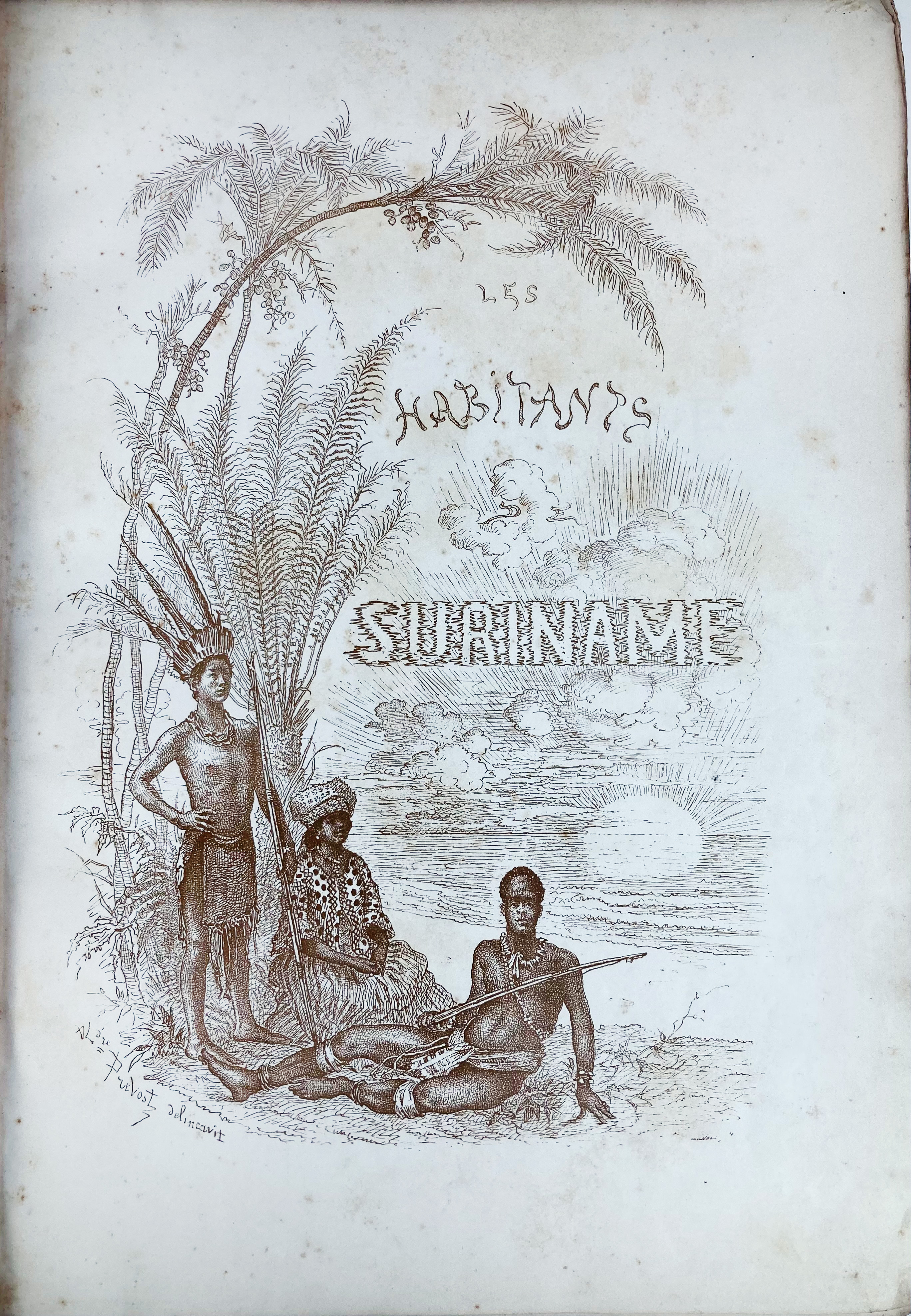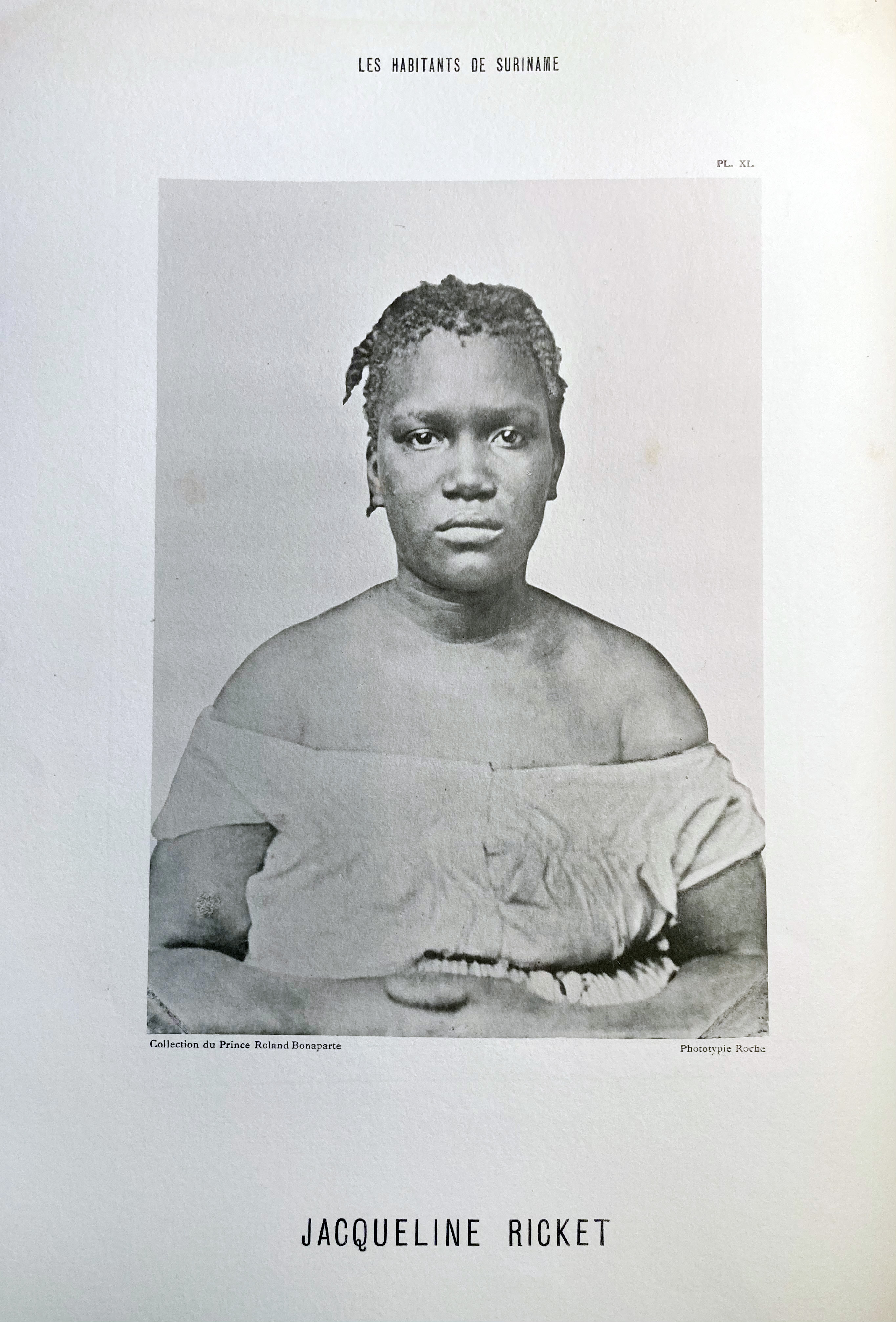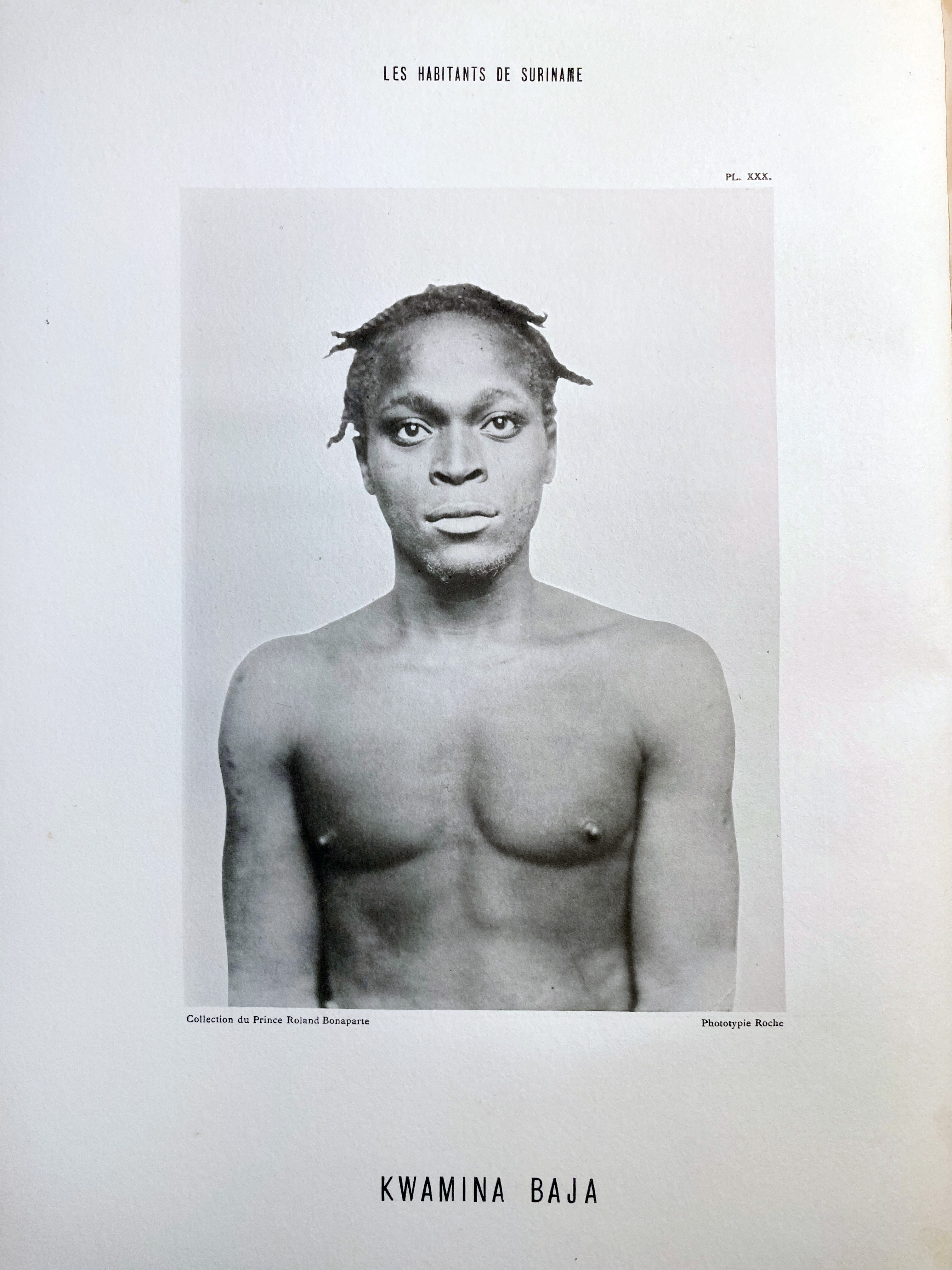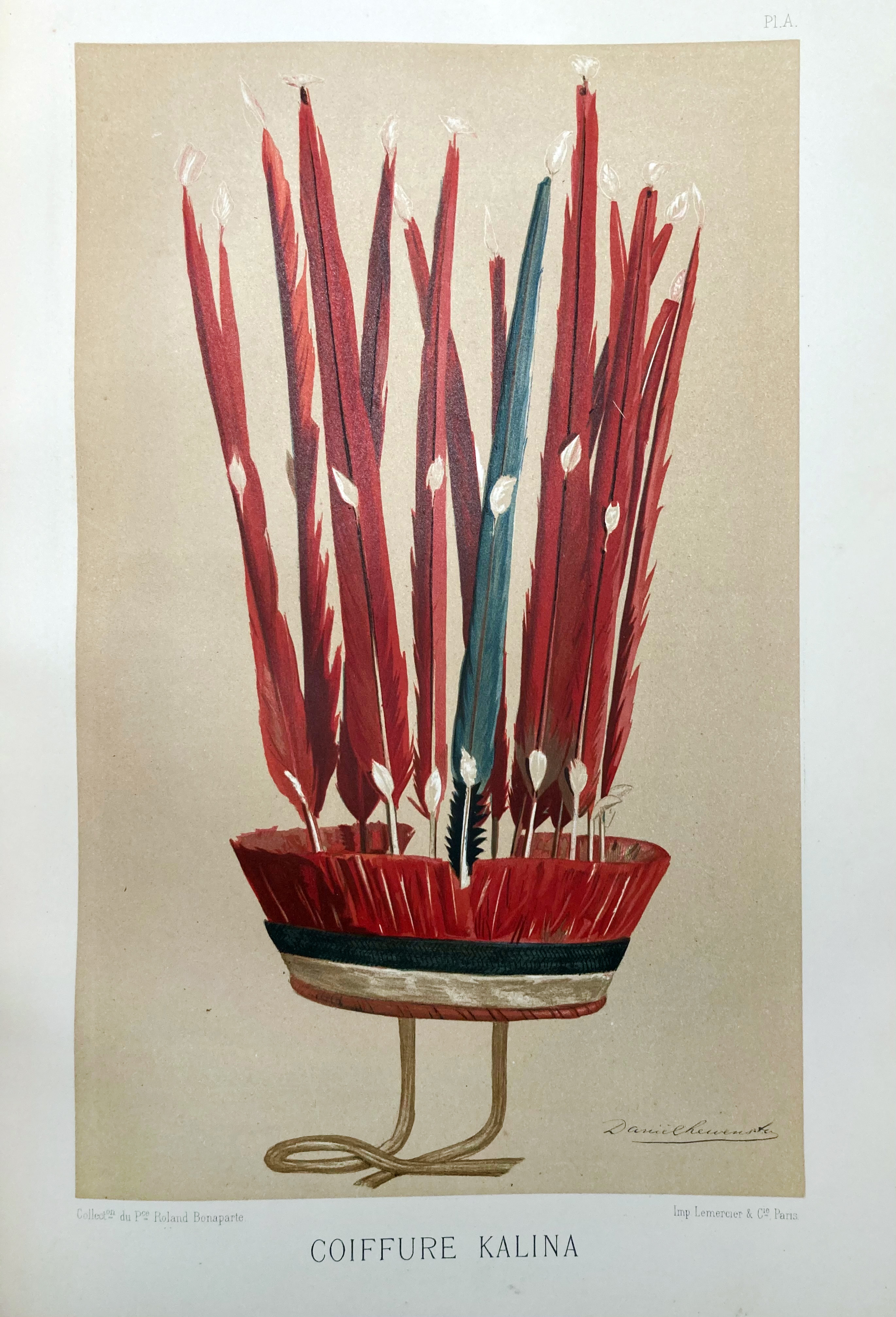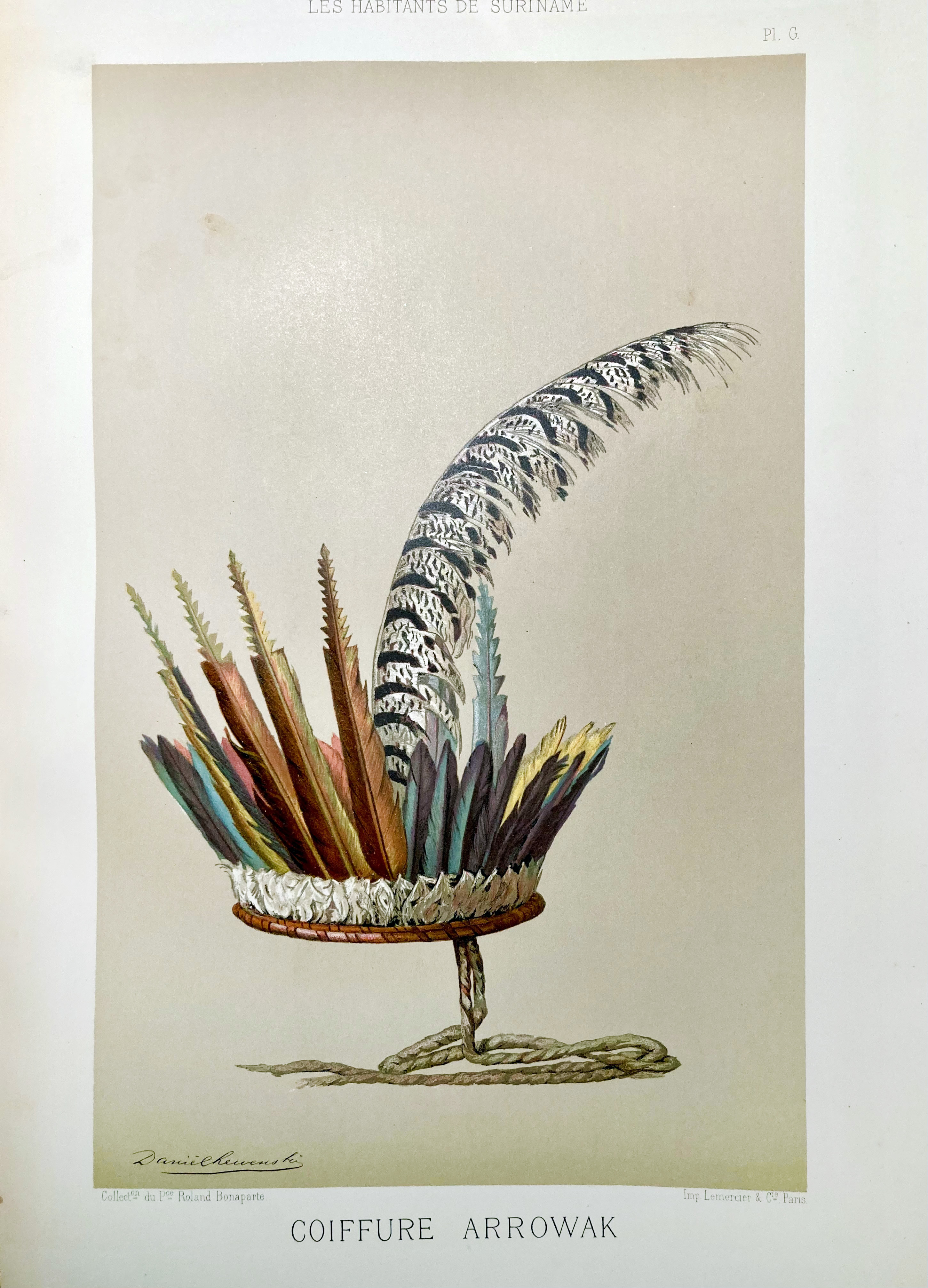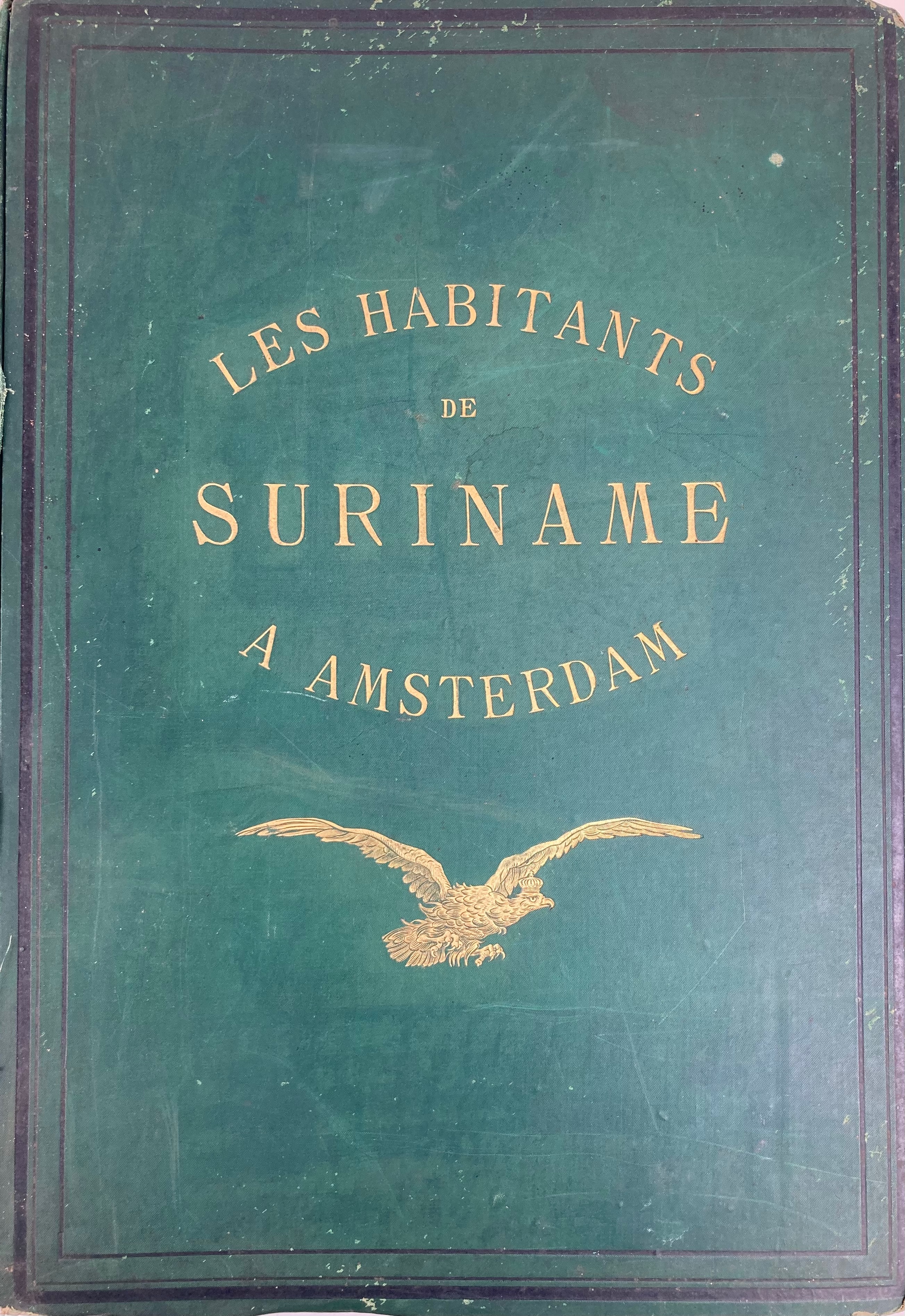Kavel 287
287
SURINAM -- BONAPARTE, R. Les habitants de Suriname. Notes recueillies a l'Exposition Coloniale d'Amsterdam en 1883. Paris, A. Quantin, 1884. (4) lvs., viii, 226, (2) pp. W. tinted dec. title, 1 photo-engr. plate showing the exhibition 'poster', 2 fold. cold. maps of Surinam (1 a bit stained), 55 plain photo-engr. portraits of indigenous peoples, 13 full-p. cold. chromolithogr. plates, 10 plain views, and dec. initials. Lge-fol. Or. green cl. (Spine detached, bind. in need of restoration, some plates loose, partly foxed/browned, not all tissue guards present (the ones that are are for the greater part browned), but in all not in a bad condition).
Prince Roland Bonaparte (1858-1924) was the grandson of Lucien Bonaparte, a brother of Napoleon. In this first major anthropological work on the inhabitants of Surinam, he describes the colony of Surinam at the end of the 19th century. It gives a detailed picture of the Indians (Kalina Arrowakken), the Creole city population and the Maroons, the descendants of slaves who fled from plantations. At the Colonial World Exhibition in 1883, which took place on the Museumplein in Amsterdam, 28 inhabitants of Surinam were exhibited. Prince Roland Bonaparte (1858-1924) used this exhibition to make his book about the inhabitants of Surinam. The book contains 61 beautiful monochrome photographs, each with a detailed description of appearance and background. The intention was to arouse interest in Surinam among Dutch private individuals ‘by showing something from the Colony in the ethnological field that has never been seen in Europe'. The Netherlands abolished slavery in 1863. Many of the people depicted here had therefore been slaves. - Rouffaer/M. p.634; Van Doorne 0770. Scarce.€ 800
uitslag € 0
Terug
